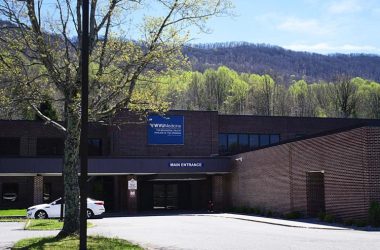ELKINS, W.Va. — The tornado preparedness and readiness of businesses and households were put to the test statewide Monday.
The National Weather Service in Charleston issued a Special Weather Statement at 10:30 a.m. Monday conveying test tornado warning information, which activated the tornado drill throughout West Virginia for approximately 20 minutes.
The purpose of the test was to encourage residents to become familiar with severe weather emergency plans, whether at home, work or school.
Randolph County Office of Emergency Management Director Cindy Hart said that since tornadoes are not common in this region, local residents have the tendency to “get complacent” with their tornado preparedness.
“People just don’t think about them anymore,” she said. “Therefore the kids are oblivious to what’s going on if (a tornado touches down.).”
Hart said it’s essential for citizens to be prepared for a tornado at work, at school and at home.
“People think these things never happen – floods never happen, a snow storm never happens, a tornado never happens,” she said. “If you’re not prepared, that’s when it’s going to happen.”
Hart said every business and household should develop a tornado plan, just as they would a fire plan.
“As kids, we were asked to do a fire drill in our home,” she said. “The firemen would come in and give us a talk and we’d go home and do a fire drill so we’d have a plan.”
Hart noted straight-line winds, which were observed in 2012 during a derecho that left approximately 672,000 West Virginians without power – some for more than two weeks – can be dangerous in the same way as twisters.
“We have a lot of straight-line winds, which are basically a tornado,” she said. “You’ll see a straight line with miles of destruction.”
Hart said the Randolph County OEM may schedule tornado drills in the future to test tornado preparedness and readiness among county citizens.
According to the Federal Emergency Management Agency, tornadoes are nature’s most violent storms. Generally emerging from powerful thunderstorms, they appear as a funnel or cone-shaped cloud with winds that can reach up to 300 miles per hour.
Most damage from a twister occurs when they come in contact with the ground, where tornadoes can devastate an area up to a mile wide and 50 miles long. The storms are most common between March and August, but they can occur at any time. They can also happen anywhere, but are most common in Arkansas, Iowa, Kansas, Louisiana, Minnesota, Nebraska, North Dakota, Ohio, Oklahoma, South Dakota, and Texas – an area commonly called “Tornado Alley.” Data also reveals that they are more likely to occur between 3 p.m. and 9 p.m., but can occur at any time.
To prepare for a tornado, FEMA recommends building an emergency kit, generating a communication plan and looking out for signs that a tornado is imminent, such as a dark, greenish sky; large hail; large, dark, low-lying clouds; and a loud roar.
If located in a building when a tornado strikes, FEMA encourages individuals to find a safe room, such as a basement, cellar or the lowest building level. In cases where there is no basement, an inside room such as a closet or hallway is preferable. FEMA notes it’s imperative that people stay away from corners, windows, doors and outside walls and not open windows. It is also important for individuals to wear sturdy shoes and protect their heads.
If a tornado hits and someone is in a trailer or mobile home, FEMA encourages them to get out immediately and seek the lowest floor of a sturdy, nearby building or storm shelter. If an individual is stuck outside and cannot reach shelter, they are encouraged to get into a vehicle and buckle their seat belt, put their head down below the windows and cover their head. In cases where there is no car or shelter, FEMA encourages individuals to find a ditch or area lower than the ground and lie down, as they are safer in a low, flat location than under a bridge or highway overpass.
After a tornado, FEMA recommends wearing sturdy footwear and staying away from dangling or loose power lines.
For more information about what to do in the event of a tornado, contact the Randolph County OEM at 304-636-0483. For extensive information about how to prepare and plan for tornadoes, or other natural disasters, visit FEMA’s www.Ready.gov.




